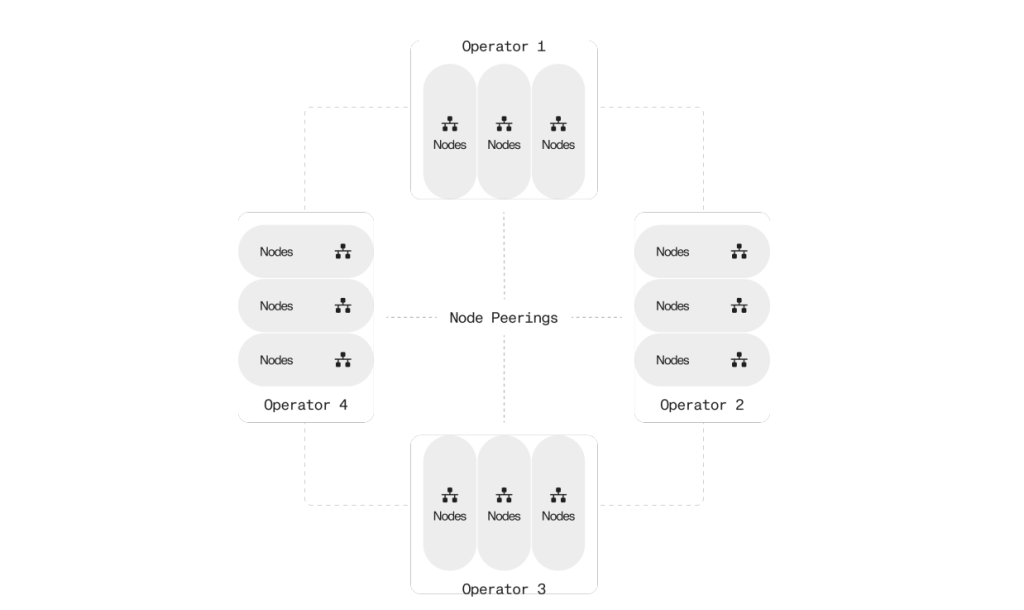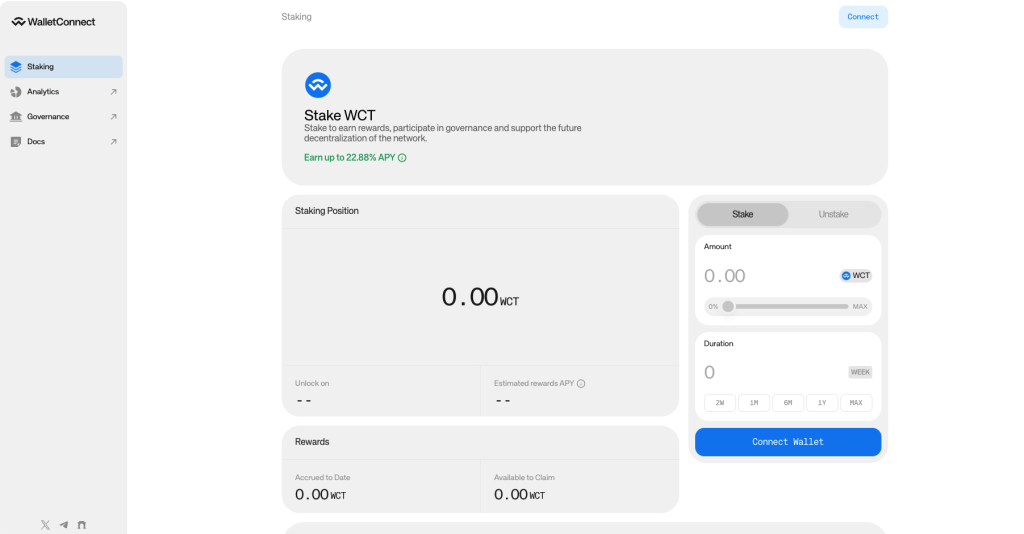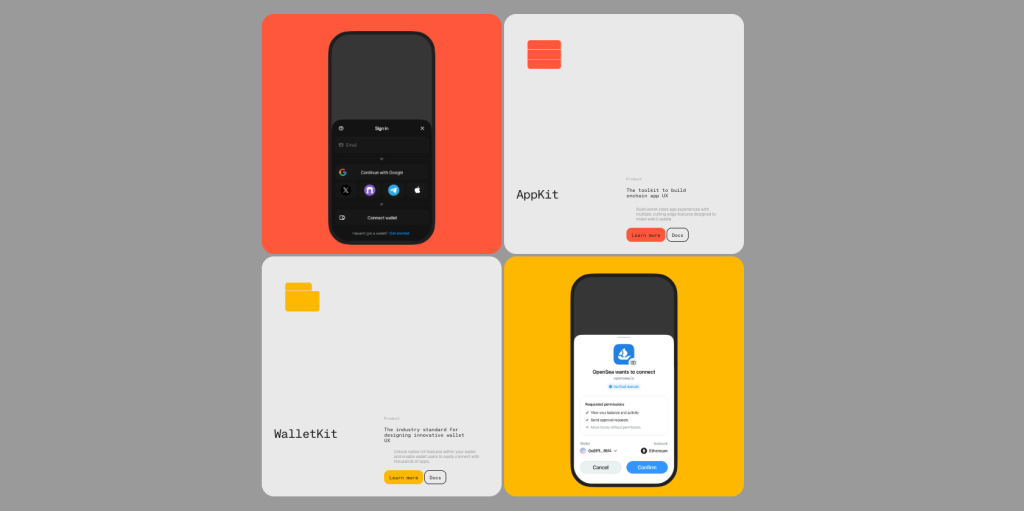







































How WalletConnect Becomes the Nervous System of Web3 Connectivity
 FTR
FTR
 READ
READ
 MODE
MODE
| Key Points: - WalletConnect runs on encrypted, decentralized nodes using Rendezvous Hashing for messaging. - Nodes require 100K WCT stake, with slashing for low uptime or performance. - Smart Sessions and Link Mode improve UX with persistent, cross-device wallet connections. |

Operating on a relay and gateway node architecture, WalletConnect uses Rendezvous Hashing to route encrypted wallet–dApp messages without central servers. Its Service Nodes and Gateway Nodes are governed by a performance-driven staking model, requiring 100,000 WCT and 52-week lockups for operators.
Innovations like Smart Sessions and Link Mode remove the need for repeated wallet signatures and support cross-device continuity, while WalletKit and AppKit ease developer integration.
As WalletConnect moves toward permissionless node participation, fee-based incentives, and NFT identity registries, it cements its role as a critical UX protocol for Web3 — one that combines privacy, reliability, and decentralization at scale.
Relay, Gateway, and Node Architecture

The WalletConnect Network operates on a decentralized, real-time messaging infrastructure rather than a traditional blockchain. This structure is optimized for high-frequency wallet–app communications across Web3 applications. The architecture is composed as shown in the table below:
| Node/Mechanism | Description |
|---|---|
| Service Nodes | Responsible for storing and relaying end-to-end encrypted messages, functioning as secure inboxes. |
| Gateway Nodes | Ensure scalability and low-latency communication across the network. |
| Rendezvous Hashing | A deterministic routing mechanism enabling decentralized message delivery without central servers. |
All communication through the network is fully encrypted, ensuring that wallet addresses, transaction hashes, and user identities remain private. This architecture supports anonymous logins and KYC-free crypto interactions across decentralized ecosystems.
Performance, Slashing, and Stakeweight Mechanics

Node performance within the WalletConnect Network is tightly regulated using a performance-based rewards and slashing model.
Performance Metrics:
- Uptime and latency are tracked and used to determine a node’s performance coefficient (U ∈ [0,1])
- Underperformance triggers slashing, penalties, and potential node suspension
Staking Mechanics:
| Criteria | Details |
|---|---|
| Minimum Requirement | 100,000 WCT |
| Lock-up Duration | Minimum 52 weeks |
| Stake-weight | Increases with longer commitment durations |
| Reward Formulas | Includes caps to prevent dominance by large holders |
The system is designed to prioritize reliability and long-term alignment, ensuring only high-performing, committed operators run critical infrastructure.
Smart Sessions, Link Mode, and WalletKit Integrations
WalletConnect continues to innovate in the wallet user experience space with the introduction of Smart Sessions and Link Mode.
| Feature | Description |
|---|---|
| Smart Sessions | Provide persistent, secure connections between wallets and applications. Remove the need for repeated wallet signatures. Maintain end-to-end encryption throughout the session. |
| Link Mode | Enables session continuity across devices. Supports fast, seamless re-authentication of wallet connections. |
| WalletKit and AppKit | Developer tools offered by Reown for simple integration. Used by projects such as RainbowKit, Privy, and others to integrate WalletConnect functionality into wallets and dApps. |
These technologies aim to replicate Web2-level convenience while maintaining decentralization and privacy.

Future Roadmap: More Nodes, Governance Phases, WalletCon 2025
WalletConnect’s 2025 strategy focuses on expanding network decentralization, activating economic incentives, and enhancing infrastructure control via governance.
Planned Milestones:
- Permissionless Service Nodes: Open participation with performance requirements
- Auditor Nodes: Monitor and verify network performance independently
- Fee Activation: Governance-controlled protocol fees for SDKs and applications
- Accounting Nodes: Automate token reward calculations and distributions
- NFT Registries: For decentralized identity and application registry
WalletCon 2025: Held in Denver, Colorado, the conference gathered WalletConnect ecosystem partners including Ledger, Nansen, Reown, Across, and ChainPatrol, under a shared commitment to building user-owned connectivity infrastructure.
WalletConnect’s Role in the Future of Onchain UX
As Web3 continues to expand across Layer 1s, rollups, and vertical applications, WalletConnect remains a foundational component in enabling secure and seamless wallet–app connections.
Rather than competing with wallet providers, it functions as a universal UX layer, adaptable across networks and interfaces.
With innovations like Smart Sessions, a growing network of decentralized nodes, and active governance underway, WalletConnect is positioned as critical infrastructure for the next generation of digital ownership and decentralized engagement.
| DISCLAIMER: The information on this website is provided as general market commentary and does not constitute investment advice. We encourage you to do your own research before investing. |

